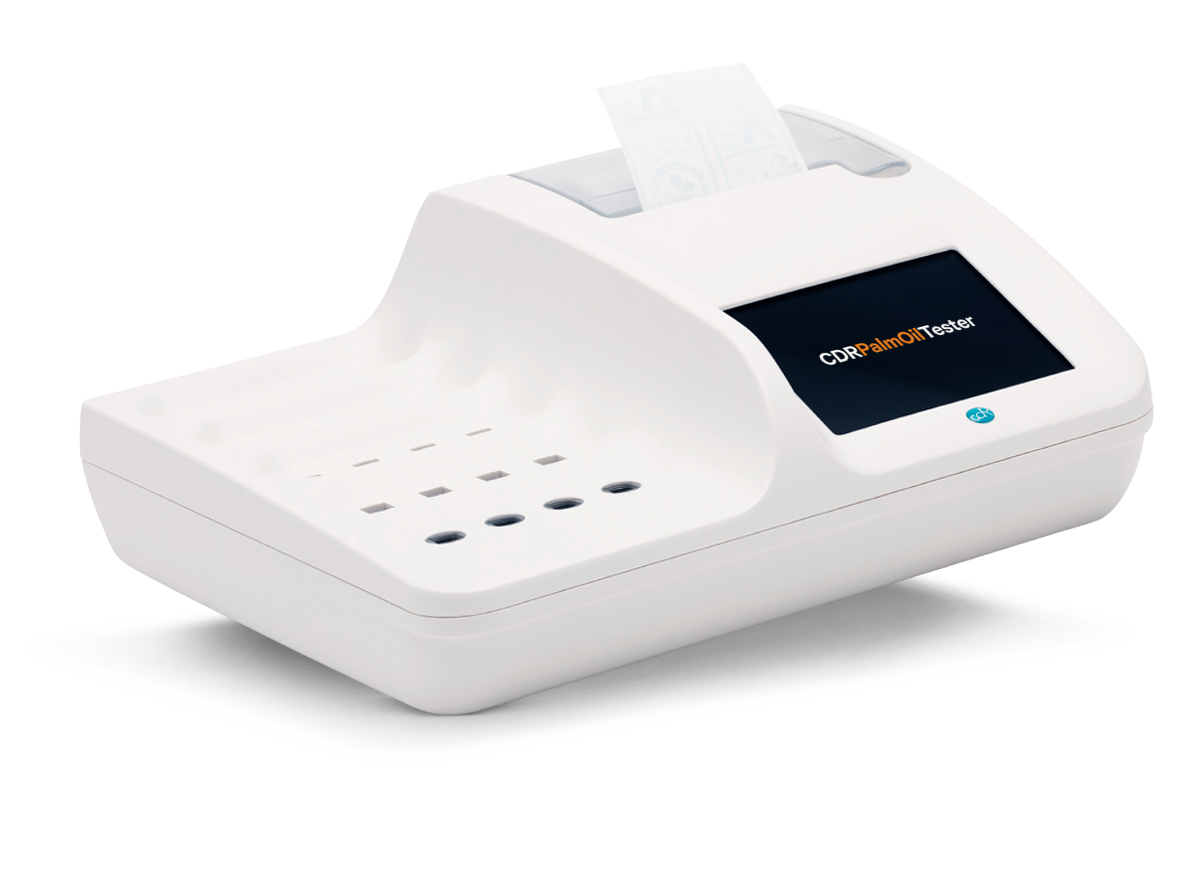p-Anisidine Value (AnV) test in Palm oil
Anisidine value test is used to assess the secondary oxidation of oil, which is mainly imputable to aldehydes and ketones, and is therefore able to tell the oxidation "history" of an oil.
Furthermore, AnV analysis on oil is an indicator of excessive oil deterioration in deep frying process.
Method
Test type: Kinetic analysis.
Testing time: 1 minute.
Analysis sessions with multiple samples are possible up to a maximum of 16 tests.
Sample treatment
Solid samples at room temperature must be melted before being analysed. The sample must be collected when the oil is consistently melted and still warm.
Principle of the test
Aldehydes, derived from the secondary oxidation of fat matrix, react with the p-anisidine determining a variation in the absorbance, measured at 366 nm. Anisidine value is expressed as AnV (Anisidine value) following AOCS (Cd 18-90) the reference method.
Calibration curve
CDR method shows a good correlation with Campden BRI laboratory method (Campden BRI Method TES-AC-360).
...
Reagent test Kits
Measuring range
| Analyses | Measuring range | Resolution | Repeatability |
|---|---|---|---|
| p-Anisidine | 0.5 - 100 AnV | 0.1 AnV | 0.7 AnV |
The analyzer for palm oil quality control
CDR PalmOilTester
- Complete analysis panel, supplied already configured
- Up to 16 determinations simultaneously
- Possibility of carrying out analyses of the same sample
- Integrated printer
- Full connections (LAN - USB - Bluetooth barcode/QR code reader)
